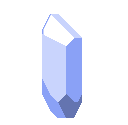-
class Inky.Pointer¶
-
setPosition(self:
Inky.Pointer, x:number, y:number):Inky.Pointer¶ Sets the position of the Pointer, to potentially enter or exit Elements
See:
-
getPosition(self:
Inky.Pointer): (x?:number, y?:number)¶ Gets the position of the Pointer
-
setTarget(self:
Inky.Pointer, target:Inky.Element):Inky.Pointer¶ Sets the target of the Pointer, to potentially enter or exit Elements
A ‘target’ Pointer is useful for keyboard navigation, or invoking events on Elements programmatically
See:
-
getTarget(self:
Inky.Pointer):Inky.Element?¶ Gets the target of the Pointer
-
getMode(self:
Inky.Pointer):Inky.PointerMode¶ Gets the mode of the Pointer
-
setActive(self:
Inky.Pointer, active:boolean):Inky.Pointer¶ Sets if the Pointer is active, to potentially enter or exit Elements
See:
-
isActive(self:
Inky.Pointer):boolean¶ Gets if the Pointer is active
-
doesOverlapElement(self:
Inky.Pointer, element:Inky.Element):boolean¶ Gets if the Pointer overlaps the Element
-
doesOverlapAnyElement(self:
Inky.Pointer):boolean¶ Get if the Pointer overlaps any Elements
-
raise(self:
Inky.Pointer, eventName:string, ...:any):boolean¶ Raise a Pointer event, to be caught by Elements
See:
-
captureElement(
self:Inky.Pointer,
element:Inky.Element,
shouldCapture?:boolean
):Inky.Pointer¶ Capture a Element, meaning all raised events will be able to be sent to it, even if it’s not being hovered
See:
-
doesCaptureElement(self:
Inky.Pointer, element:Inky.Element):boolean¶ Get if the Pointer captures the Element
-
class Internal¶
-
setPosition(self:
